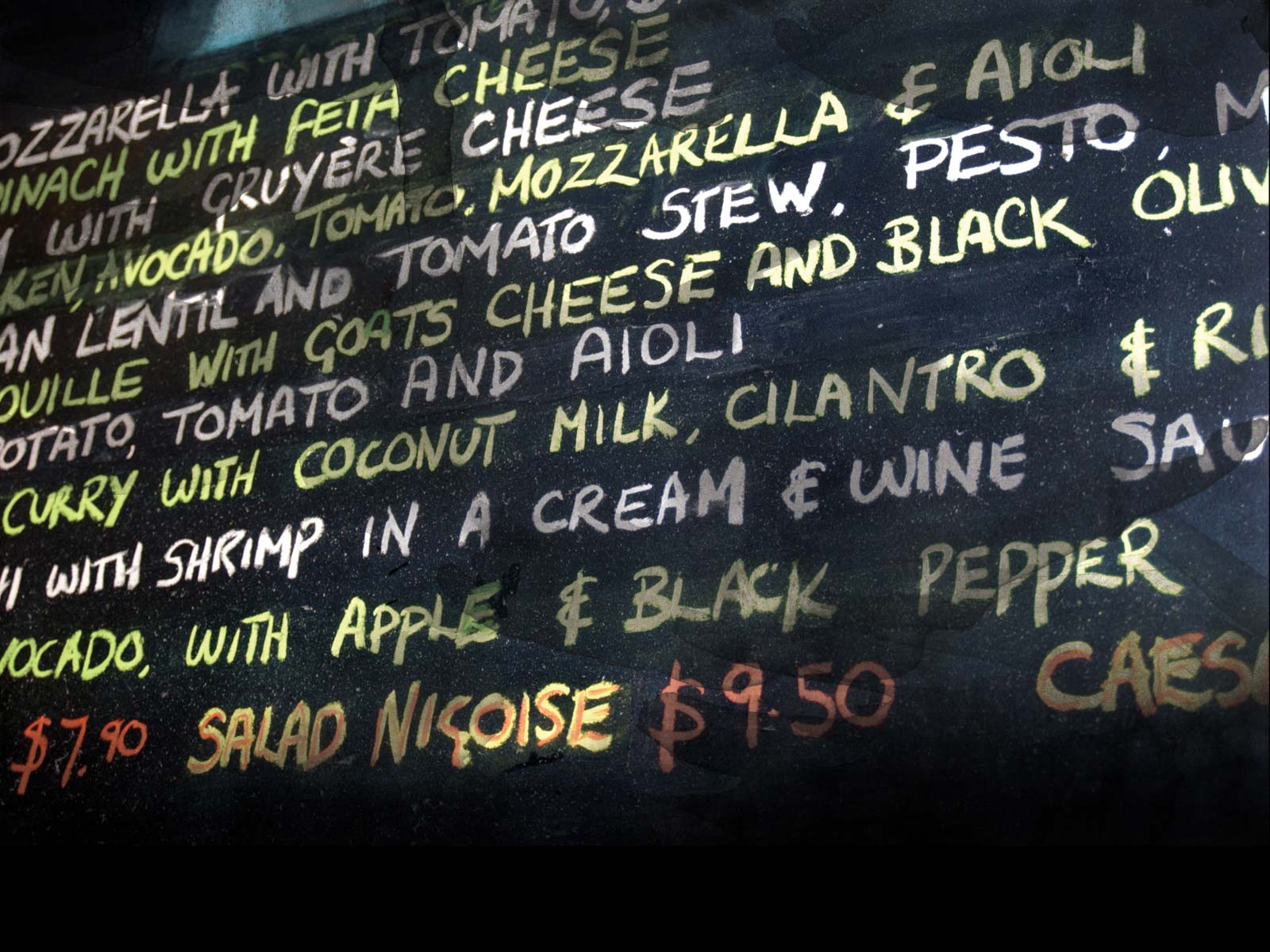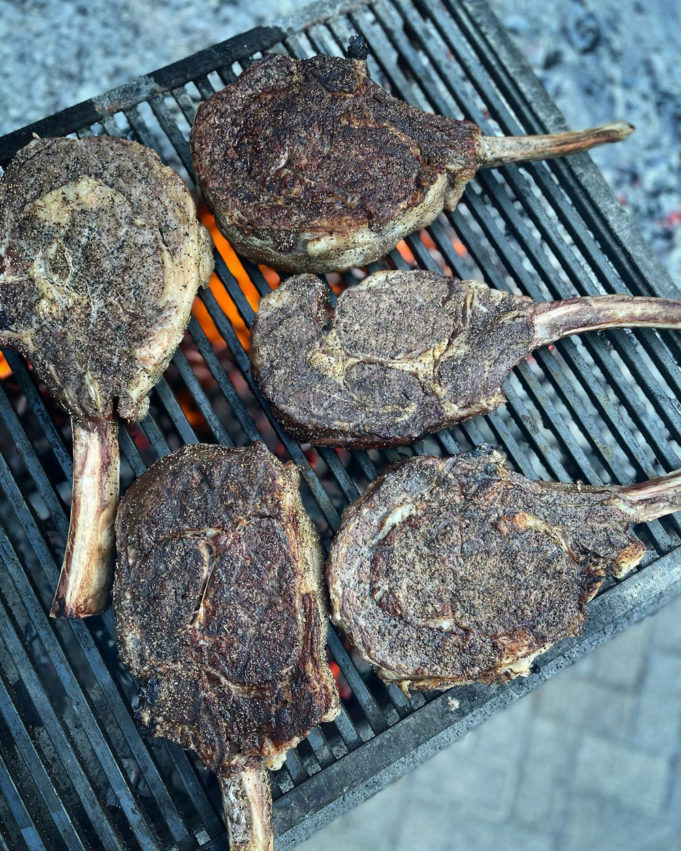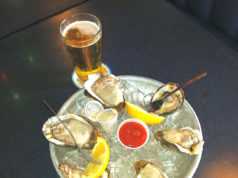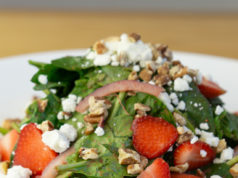Whether you’re a self-described flame master or grilling novice, there’s always room to improve your game. How early you salt your steak or pull your pork chops off the flame could mean the difference between impressing or underwhelming dinner guests.
Meat maestros Trevor Sales, owner of Brix Barbecue, and Dayne’s Craft Barbecue team member Christopher Vuelvas shared tips on properly preparing, grilling, and serving your favorite meats so you won’t look like a chump when you dust off and light up the ol’ barbie this summer.
Salt Life
Sales’ top advice is to buy the best cut of meat you can reasonably afford.
“No matter how good or bad you are as a grill master or pitmaster, you can only make crappy meat taste so good,” he said. “Buy prime. Get the good stuff, whether it’s salt, pepper, or oil.”
Then it’s time to brine. The best method for sealing in flavor and moisture, Sales said, is using salt, preferably the flaky kind. If you’re in a rush, salting your meat four to six hours before it hits the grill will do the trick, but salting two or even three days beforehand and placing the morsels atop a wire rack in the fridge is ideal.
For science-minded folks, Sales recommends this experiment.
“Salt one steak the night before it is going to get grilled,” Sales said. “Just salt it, and put it on a wire rack. Salt the other steak 20 minutes before it hits the grill. The salt will not be able to permeate the steak that you salt right before it hits the grill. It is not going to work its way into the fibers of the meat. It will pull the moisture out of the meat. All that water is going to pool on top of the steak itself. You are not retaining the moisture, but you are adding water to the surface of the meat. When it hits the grill, you are not going to be able to get that beautiful dark brown caramelized crust on your steak.”
Why? Because your steak is likely a soggy mess, and watery beef does not make for great grill marks. Sales’ other experiment offers more delectable rewards.
“Look at the steak that was salted for 12-plus hours,” he said. “That steak is almost going to look like it is in its infant stage of being dry-aged. It’ll soak that salt all the way into the meat to the point where you no longer see the salt flakes on the meat. Then it will turn your steak from that bright reddish-pink hue to a very deep, dark red color. The surface of the steak will be drier than the steak that was just salted. That salt had time to break down into the meat itself. Now your meat is retaining all that moisture inside the meat. The surface is nice and dry, which is what we really want when we want a nice sear on our steak.”
The brining principles, he said, work the same for pork and poultry. One major misconception among grillers is the role of the flame.
“There is a very large misconception in the grilling world that you need to have this huge, raging hot, blazing fire to get a good sear on your steak,” Sales said. “Really, a giant flame lights the grease and fat that drips off that steak or pork loin. That is going to flame the fire up even more. Now we are starting a grease fire that we are cooking our meat with. We’ve all had steaks and burgers like this. It leads to meat that has this really dark, black crust. That is just a sign of burnt fat from a grease fire. It tastes like a block of charcoal.”
To avoid feeding guests overly charred meats, let the charcoal or wood burn until there’s no longer a pronounced flame, Sales said.
Pull your filets from the grill when the internal temperature of the beef, pork, or poultry reaches a few or several degrees below the target temperature, Sales continued. For example, if you are shooting for a 130-degree internal temperature, pull the cut of protein off when the inner temps reach around 124 degrees Fahrenheit.
“The heat is going to continue to carry over three- to five-plus degrees when it comes off the grill,” Sales said. “As it rests, which is another important factor — never slice it right off the grill — give it time to rest and always slice against the grain.”
Sales said his first brick-and-mortar location will open at 1012 S. Main St. sometime late this summer or early fall. Follow Brix Barbecue on Instagram @BrixBarbecue.
The Third Degree
Vuelvas is a self-described lover of traditional Mexican food and smoked meats. His passion for food comes from Dayne’s and his large family, who loves cooking out every other week, he said.
Vuelvas recommends marinating your proteins of choice the day before you grill them.
“We have all been in a situation where last-minute plans are thrust upon us,” he said. “An hour of marinating time will make a huge difference in the flavor and the texture of most grilling meats.”
As for hardware, the grill master said a good meat thermometer is your best friend.
“Unless you have a decent amount of experience cooking on a grill, it’s difficult to gauge the internal temperature without one,” he continued. “Keep in mind that your meat is gonna keep cooking once it’s off the heat. I like my beef medium-rare, so I aim for around 125 to 130 degrees before I pull it off. Be patient. Take the time to oil the grates and build a nice coal bed. Create areas of your grill with high heat for searing and areas with lower temperatures for veggies and tortillas.”
Vuelvas offers this refreshing salad recipe to accompany your hearty grilled meats.
Ensalada de Sandía y Cotija
8 cups of cubed watermelon
1 finely julienned red onion
1/2 cup of Cotija cheese
1/2 cup of lightly chopped cilantro
Optional: 1 diced jalapeño or serrano pepper
Lightly brine the watermelon and onion for two hours in 4 cups of water and add vinegar (1 cup), sugar (1 cup), and salt (1/2 cup). Drain and combine everything in a large bowl. Serve cold.
Follow Dayne’s Craft Barbecue on Instagram @DayneTXBBQ.
Read about more summer eats and drinks in Paletas Spell Summer and Summer Provisions in #SummerEdition2022.













